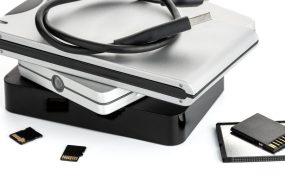
Welcome to our comprehensive guide on cabinet hardware installation. Whether you’re a DIY enthusiast or a homeowner looking to upgrade your kitchen or bathroom, properly installing cabinet hardware can enhance the overall aesthetic and functionality of your space. In this guide, we’ll walk you through the step-by-step process of installing cabinet hardware, providing you with valuable tips and advice along the way. By the end, you’ll be equipped with the knowledge and confidence to tackle this project with ease.
1: Gather the Necessary Tools and Materials
Before diving into the installation process, it’s crucial to have all the required tools and materials readily available. Here are some essentials you’ll need:
1. Screwdriver or Power Drill: Depending on the type of hardware and cabinets, you may need a screwdriver or power drill to secure the hardware in place.
2. Measuring Tape: Accurate measurements are key to achieving a polished look. Use a measuring tape to determine the proper placement of your hardware.
3. Level: To ensure your hardware is straight and aligned, a level is essential.
4. Template: Some hardware manufacturers provide templates that guide you in marking the drill holes accurately.
5. Screws: Make sure you have the right screws that match the thickness of your cabinets.
2: Plan and Measure
Before drilling any holes, take the time to plan and measure the placement of your cabinet hardware. This step is crucial to avoid any unnecessary mistakes or rework. Here’s how to proceed:
1. Identify the Style: Determine the style and design of hardware that suits your cabinets and complements your overall interior.
2. Locate the Mounting Points: Measure the distance between the mounting points on your hardware, ensuring consistency across all cabinets.
3. Mark the Drill Holes: Use a pencil to mark the exact spots where you’ll be drilling the holes. Double-check your measurements and use a level for accuracy.
3: Drill the Holes
With your measurements and markings in place, it’s time to drill the holes for your cabinet hardware. Here’s how to proceed safely:
1. Choose the Right Drill Bit: Select a drill bit that matches the size of the screws provided with your hardware.
2. Secure the Cabinets: If possible, remove the cabinet doors to make drilling easier. If not, use clamps to secure the doors in place.
3. Drill Slowly and Carefully: Start drilling at a slow speed, applying gentle pressure. Avoid drilling all the way through the cabinet.
4. Clean the Drill Dust: After drilling each hole, use a vacuum or a brush to remove any drill dust, ensuring a clean installation.
4: Attach the Hardware
Now that the holes are drilled, it’s time to attach the hardware to your cabinets. Follow these steps for a secure installation:
1. Align the Hardware: Position the hardware over the drilled holes, ensuring they align perfectly.
2. Insert the Screws: Insert the screws through the hardware and into the drilled holes. Use a screwdriver or power drill to tighten them securely.
3. Check for Levelness: Use a level to ensure the hardware is straight and level across all cabinets. Make any necessary adjustments.
5: Test and Finishing Touches
Once all the hardware is securely attached, it’s time to test their functionality and add the finishing touches:
1. Test the Functionality: Open and close the cabinet doors, checking if the hardware operates smoothly.
2. Make Adjustments if Needed: If any hardware feels loose or misaligned, make the necessary adjustments by tightening screws or repositioning.
3. Clean and Enjoy: Give your cabinets a final wipe-down to remove any dust or debris. Stand back and admire your newly upgraded space!
Frequently Asked Questions (FAQs)
Q1: Can I install cabinet hardware on my own, or should I hire a professional?
A1: Installing cabinet hardware is a DIY-friendly project that doesn’t typically require professional assistance. With the right tools and our comprehensive guide, you can achieve excellent results on your own.
Q2: How can I choose the right style of cabinet hardware?
A2: When selecting hardware, consider the overall style and theme of your space. Choose hardware that complements your cabinets and adds a touch of visual interest to the room.
Q3: What if I make a mistake while drilling the holes?
A3: Mistakes happen, but don’t worry! If you make a mistake while drilling, you can fill the hole with wood putty, sand it down, and then re-drill in the correct spot.
Q4: Should I install hardware on all my cabinets or just some?
A4: The decision to install hardware on all cabinets or just some is entirely up to you. Keep in mind that consistent hardware placement across all cabinets creates a more cohesive look.
Q5: How often should I clean my cabinet hardware?
A5: Regular maintenance is essential to keep your hardware looking its best. Wipe down your hardware regularly with a soft cloth or mild cleaner to remove dirt and fingerprints.
Conclusion
Congratulations on successfully installing your cabinet hardware! By following our expert guide, you’ve transformed your space with a touch of style and functionality. Remember to take your time during the planning and installation process to ensure precise results. With your newfound knowledge, you can confidently tackle future DIY projects and enjoy the satisfaction of a job well done. Happy hardware installation!









